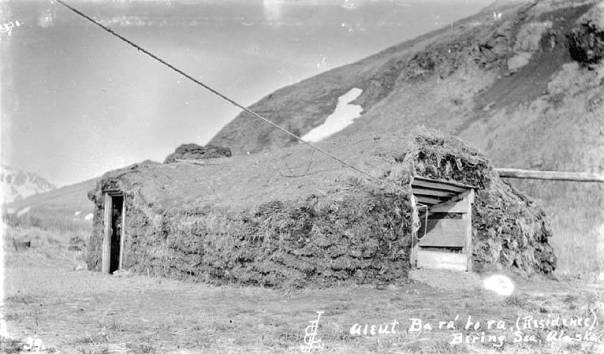
A Sod Dwelling
In 1898, a Ukrainian Lord in the municipality of Rohizna, donated passage to Canada for his horse groomer’s family. The Canadian government welcomed struggling Eastern Europeans as homesteaders who would settle Alberta’s fertile but icy windswept plains.
Customs officials unfamiliar with the Cyrillic alphabet assigned my mother’s grandparents the anglicized name of Tokaruk and her newly wed parents the name of Huculak. The family arrived with the earliest pioneers — former serfs who chose forested land that had to be cleared before they could begin to farm their own land.
The Canadian government offered them a quarter (160 acres) of land that had to be settled in order to obtain their title. As the family crossed central Canada on the newly completed Canadian Pacific Railroad, they marveled as they crossed thousands of miles of forests and thought of how wealthy they would be in this land of trees.
On a tour, our guide leads us to a burdei or buda — a sod hut. Dug into the ground and covered in thatch, it sheltered the pioneers until they could clear their heavily forested land. They crowded into the hut (smaller than the one in the above photo), and breathed the damp earth smell. Entire families huddled on benches that edged the dark and claustrophobic burdeis, sometimes for days, while winter raged and temperatures plunged to-40° on the Alberta plains. A desolate silence of boundless cold and dead whiteness brought time to a standstill as wind blew the churning snow into drifts heavy enough to warm the burdeis.
The family crowded into a burdei their first winter, but abandoned it in spring when it became a dripping, covered pond. Their only choice was to move out under the stars where they contended with mosquitos, mud, bears, and howling wolves at night. In general, women cleared the land and planted seeds. To earn enough to survive, many men left home for months at a time to work on the railroads.
My mother’s parents filed for title to their land in 1898, the same year my Danish immigrant father Hans Pederson returned to Seattle after a year as a Yukon prospector on the Klondike Gold Rush. He began a building career that by the time of the Depression brought him success as one of Washington’s greatest contractors.
My Canadian homesteading forebears managed their house and barn relatively quickly, but it took five years of backbreaking labor with only a pickaxe before they cleared the ten acres of heavily forested land and obtained their title. In 1916 my mother, Domka Huchulak, fourth of seven siblings, became the first member of her family to attend school since the Canadian government offered schooling only to English speaking children.
© 2018 Mysterious Builder of Seattle Landmarks, Searching for My Father by Paula Pederson